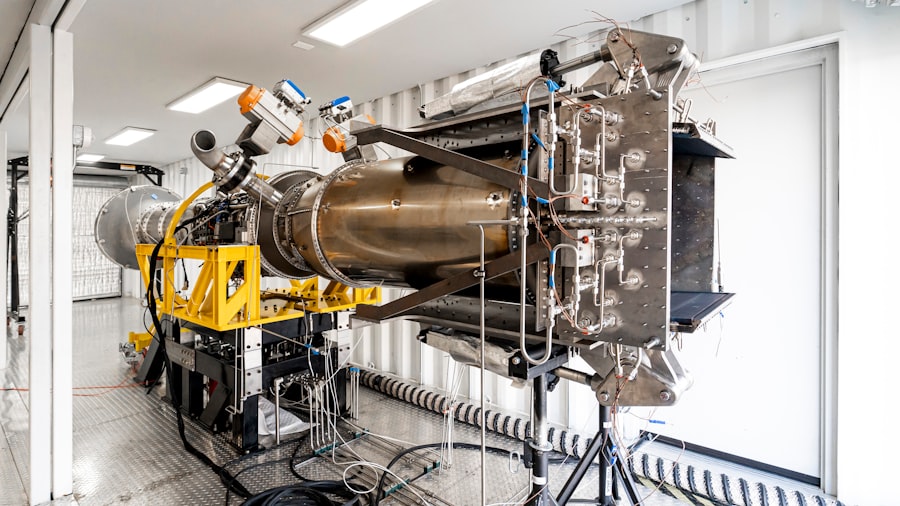Tai Aerospace stands as a beacon of innovation and excellence within the aerospace sector, renowned for its commitment to advancing aviation technology and enhancing aircraft performance. Established with a vision to redefine the boundaries of flight, Tai Aerospace has carved a niche for itself by focusing on cutting-edge research and development, as well as the integration of advanced materials and systems into aircraft design. The company’s mission extends beyond mere manufacturing; it aims to create solutions that not only meet the demands of modern aviation but also anticipate the needs of future generations.
The significance of Tai Aerospace in the global aviation landscape cannot be overstated. With a diverse portfolio that encompasses everything from commercial aircraft to military applications, the company has positioned itself as a leader in both innovation and sustainability. By leveraging state-of-the-art technology and fostering a culture of continuous improvement, Tai Aerospace is not just participating in the aerospace industry; it is actively shaping its trajectory.
This article delves into the rich history, groundbreaking innovations, and future aspirations of Tai Aerospace, highlighting its pivotal role in the evolution of flight.
Key Takeaways
- Tai Aerospace has a rich history marked by continuous innovation in aircraft design.
- The company significantly influences the aviation industry through advanced technologies and sustainable practices.
- Tai Aerospace is committed to promoting sustainable aviation to reduce environmental impact.
- Strategic collaborations and partnerships enhance Tai Aerospace’s role in the global aerospace sector.
- The company envisions a transformative future for flight, focusing on cutting-edge developments and industry leadership.
The History and Evolution of Tai Aerospace
The origins of Tai Aerospace can be traced back to the early 2000s when a group of visionary engineers and entrepreneurs recognized the potential for innovation in the aerospace sector. Initially focused on small-scale aircraft components, the company quickly expanded its operations to include full aircraft design and manufacturing. This evolution was marked by a series of strategic investments in research and development, which laid the groundwork for the advanced technologies that would later define its product offerings.
As Tai Aerospace grew, it faced numerous challenges typical of the aerospace industry, including stringent regulatory requirements and intense competition. However, these challenges spurred the company to adopt a proactive approach to innovation. By collaborating with leading universities and research institutions, Tai Aerospace was able to stay at the forefront of technological advancements.
This commitment to evolution not only enhanced its product line but also established Tai Aerospace as a trusted partner for governments and commercial airlines worldwide.
Tai Aerospace’s Innovations in Aircraft Design

At the heart of Tai Aerospace’s success lies its relentless pursuit of innovation in aircraft design. The company has pioneered several groundbreaking technologies that have transformed how aircraft are conceived and constructed. One notable example is the use of composite materials, which offer significant weight savings compared to traditional aluminum structures.
This shift not only improves fuel efficiency but also enhances overall aircraft performance, allowing for longer ranges and higher payload capacities. Moreover, Tai Aerospace has embraced advanced aerodynamics in its design philosophy. By utilizing computational fluid dynamics (CFD) simulations, engineers can optimize wing shapes and fuselage designs to minimize drag and maximize lift.
This meticulous attention to aerodynamic efficiency has resulted in aircraft that are not only faster but also more environmentally friendly, aligning with global efforts to reduce carbon emissions in aviation. The integration of smart technologies, such as fly-by-wire systems and advanced avionics, further exemplifies Tai Aerospace’s commitment to pushing the boundaries of what is possible in aircraft design.
The Impact of Tai Aerospace on the Aviation Industry
| Metric | Value | Impact Description |
|---|---|---|
| Number of Aircraft Produced | 150 | Significant contribution to regional and commercial aviation fleets |
| Fuel Efficiency Improvement | 12% | Reduction in fuel consumption compared to previous models |
| Market Share in Regional Jets | 18% | Competitive presence in the regional jet segment |
| Reduction in Emissions | 15% | Lower carbon footprint contributing to greener aviation |
| Average Aircraft Range | 3,200 km | Extended operational range enabling new route possibilities |
| Customer Satisfaction Rate | 92% | High reliability and performance leading to positive feedback |
| Number of New Technologies Introduced | 5 | Innovations in avionics, materials, and aerodynamics |
Tai Aerospace’s influence on the aviation industry extends far beyond its own product offerings; it has set new standards for performance, safety, and sustainability that resonate throughout the sector. By introducing innovative designs and technologies, the company has compelled competitors to elevate their own standards, fostering a culture of continuous improvement across the industry. This ripple effect has led to advancements in safety protocols, operational efficiencies, and customer satisfaction.
Furthermore, Tai Aerospace’s commitment to research and development has positioned it as a thought leader in aviation technology. The company’s findings and innovations are often shared at international aerospace conferences, where they inspire discussions on future trends and challenges facing the industry. By actively participating in these dialogues, Tai Aerospace not only showcases its expertise but also contributes to shaping policies and regulations that govern aviation practices worldwide.
Tai Aerospace’s Contribution to Sustainable Aviation
In an era where environmental concerns are paramount, Tai Aerospace has taken significant strides toward promoting sustainable aviation practices. The company recognizes that the future of flight hinges on its ability to reduce the ecological footprint of air travel. One of its most ambitious initiatives involves the development of hybrid-electric propulsion systems that promise to drastically cut fuel consumption and emissions.
Additionally, Tai Aerospace has invested heavily in research aimed at developing sustainable aviation fuels (SAFs). These alternative fuels are derived from renewable resources and have been shown to significantly lower greenhouse gas emissions compared to traditional jet fuels. By collaborating with fuel manufacturers and regulatory bodies, Tai Aerospace is at the forefront of efforts to make SAFs a viable option for commercial airlines, thereby contributing to a more sustainable aviation ecosystem.
The Future of Flight: Tai Aerospace’s Vision

Looking ahead, Tai Aerospace envisions a future where flight is not only more efficient but also more accessible to people around the globe. The company is actively exploring concepts such as urban air mobility (UAM), which aims to integrate aerial transportation into urban environments through electric vertical takeoff and landing (eVTOL) aircraft. This innovative approach could alleviate traffic congestion in major cities while providing rapid transit options for commuters.
Moreover, Tai Aerospace is committed to harnessing artificial intelligence (AI) and machine learning technologies to enhance operational efficiencies within aviation. By implementing predictive maintenance systems that utilize real-time data analytics, airlines can reduce downtime and improve safety outcomes. This forward-thinking approach positions Tai Aerospace as a key player in shaping the future landscape of air travel.
Collaborations and Partnerships: Tai Aerospace’s Influence on the Aerospace Industry
Collaboration is a cornerstone of Tai Aerospace’s strategy for growth and innovation. The company has forged strategic partnerships with various stakeholders across the aerospace ecosystem, including government agencies, research institutions, and other industry players. These collaborations enable Tai Aerospace to leverage diverse expertise and resources, accelerating the development of new technologies and solutions.
One notable partnership involves collaboration with leading universities on research projects focused on advanced materials and propulsion systems. By engaging with academic institutions, Tai Aerospace not only gains access to cutting-edge research but also nurtures the next generation of aerospace engineers and scientists. This symbiotic relationship fosters an environment where innovation thrives, ultimately benefiting the entire aerospace industry.
Tai Aerospace’s Role in Shaping the Future of Flight
Tai Aerospace stands at the forefront of a transformative era in aviation, characterized by rapid technological advancements and an increasing emphasis on sustainability. Through its unwavering commitment to innovation, collaboration, and environmental stewardship, the company is not merely adapting to changes within the industry; it is actively driving them. As it continues to push boundaries and explore new frontiers in flight technology, Tai Aerospace is poised to play a pivotal role in shaping the future of aviation for generations to come.
The journey of Tai Aerospace reflects a broader narrative within the aerospace sector—one that emphasizes resilience, adaptability, and a forward-thinking mindset. As challenges arise, whether they be environmental or technological, Tai Aerospace remains steadfast in its mission to redefine what is possible in aviation. With each new aircraft design or technological breakthrough, it reaffirms its position as a leader in the industry while inspiring others to follow suit in pursuit of excellence and sustainability in flight.




